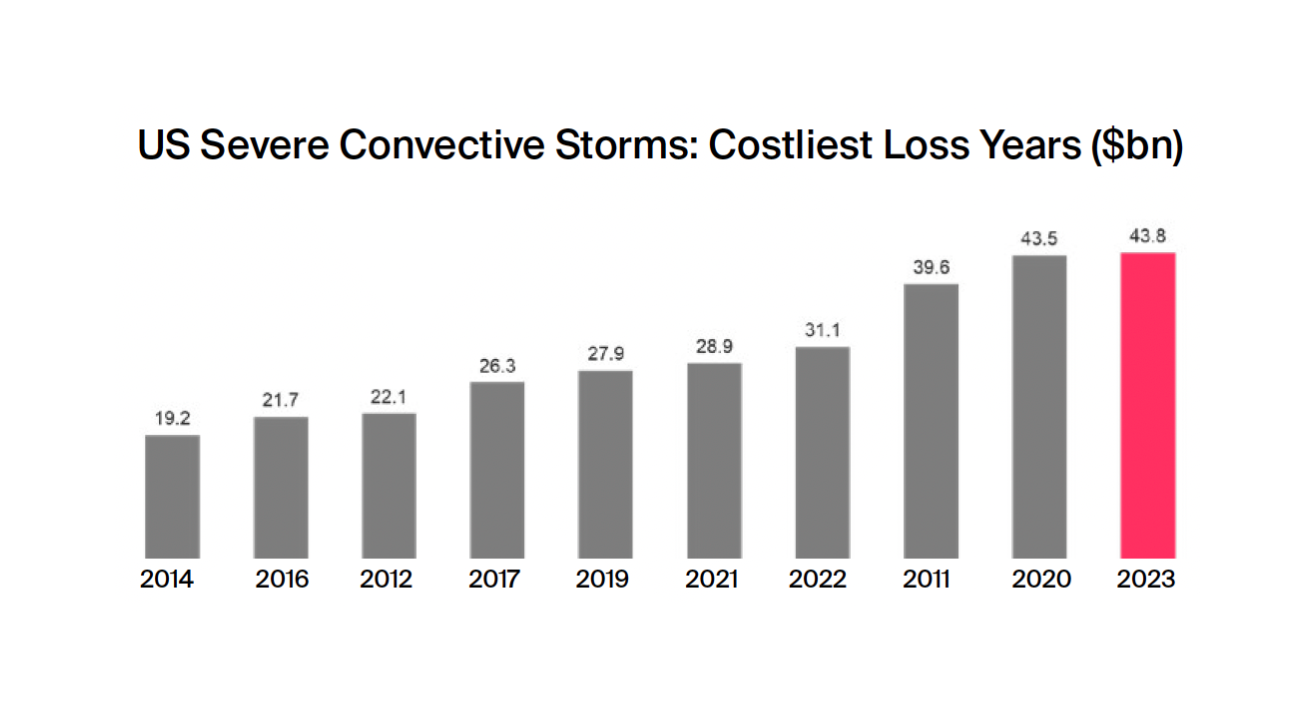From Peanut Butter to Precision: Reimagining Hail Risk Management
Property-specific risk assessment unlocks market opportunities, even in high-risk areas.

.png)
Hail Risk Management Is Ripe for Change
Insured losses from severe convective storms in the United States have now surpassed the $50 billion mark, making 2023 the highest annual loss year on record. Hail risk management is ripe for change as the current standard of managing and evaluating risk is no longer tenable given the new realities of climate risk.
The industry needs to adapt and re-evaluate the tools and methods of loss prevention to effectively navigate the changing insurance landscape. The reality is that within each hail-exposed territory, there is a dichotomy of good and bad risks, but the current methodology is not able to adequately segment risk at the property level. Carriers need the tools to understand the true risk of each individual property to differentiate between good and bad risks, even those properties within the same zip code or neighborhood.

The Peanut Butter Approach to Risk Management
Many carriers spread catastrophic risk premiums across territories like it is peanut butter - they make everything perfectly even without taking into account the ridges and crevasses of the bread, or in this case, the variations and differences in properties that impact a property’s risk exposure. But the reality is there are ridges of good risk and crevasses of bad risk in every area.
Several carriers have made the news recently by “peanut butter-spreading” their risk management approach across states and regions. The problem with this approach is that the “good risks” - properties that are likely to withstand severe weather despite their location - make their way to another carrier who is able to identify that property as a “good risk,” while the “bad risks” will stay, enticed by pricing that is below their property’s risk level. This leaves the carrier on the hook for losses beyond what is expected.

Taking a Modern Approach to Risk Modeling
In order to safeguard against hail losses, it is important for insurers to enhance their risk assessment by adopting a holistic approach that combines hail science, property-specific features, and real claims data. Z-HAIL is an AI-powered climate risk model that predicts the frequency and severity of hail claims for every property in the continental US. Z-HAIL examines the interaction of climatology, geography, and the unique characteristics of every structure including the roof, analyzed in 3D, including accumulated damage. In addition, Z-HAIL has been trained and validated on actual loss data for better accuracy and acceptance by regulators, and it provides unparalleled transparency into risk scores by including the top risk factors contributing to each property’s score.
Utilizing ZestyAI's Z-HAIL model provides valuable insights so insurance professionals can make more informed decisions and offer coverage that is commensurate with actual risk.
For more information:
Download ZestyAI’s latest research paper Putting Hail on Ice









